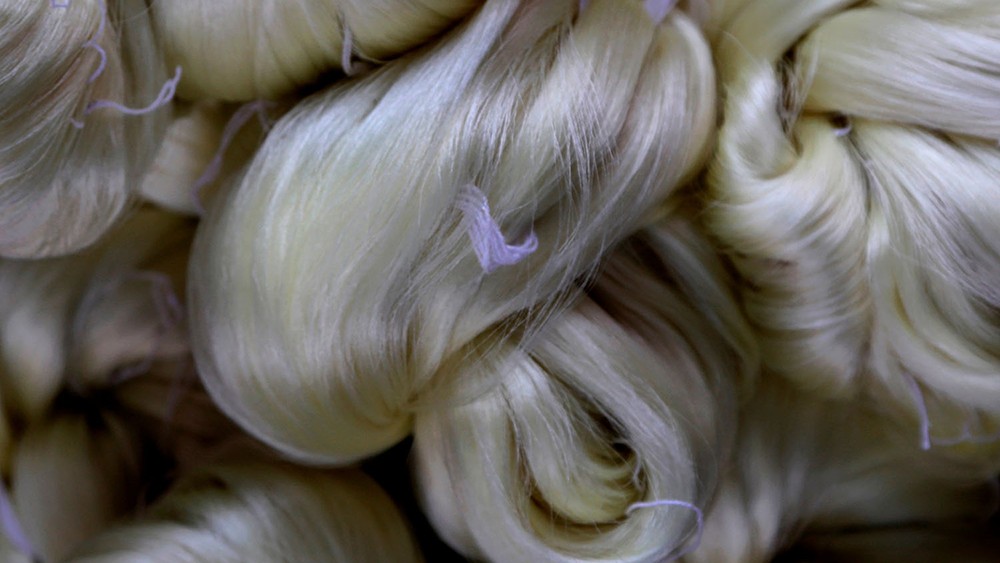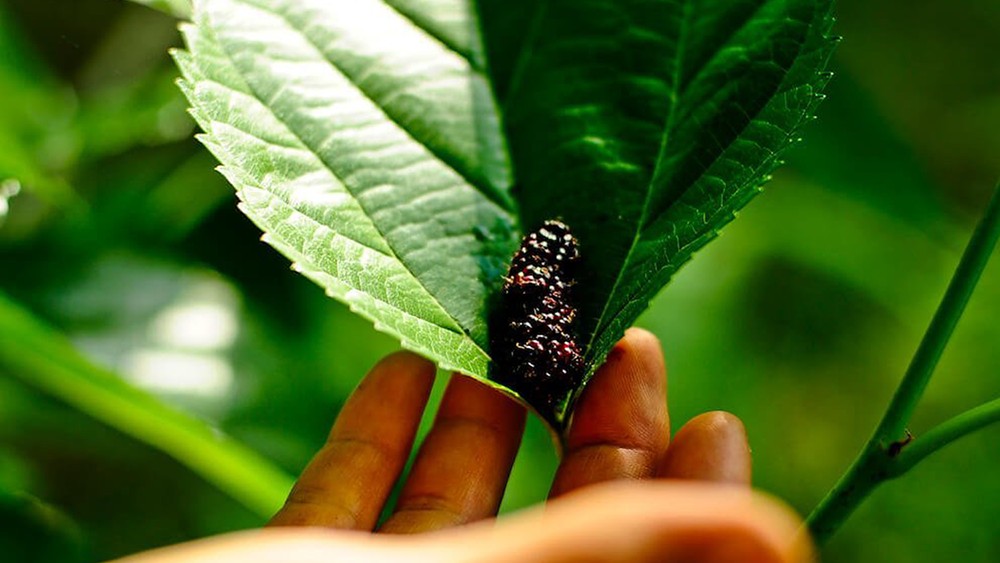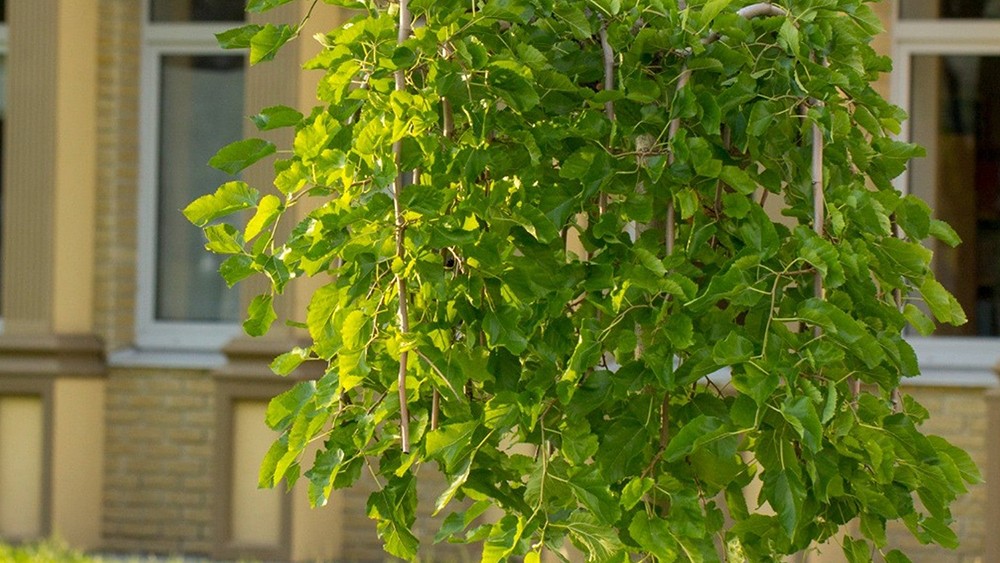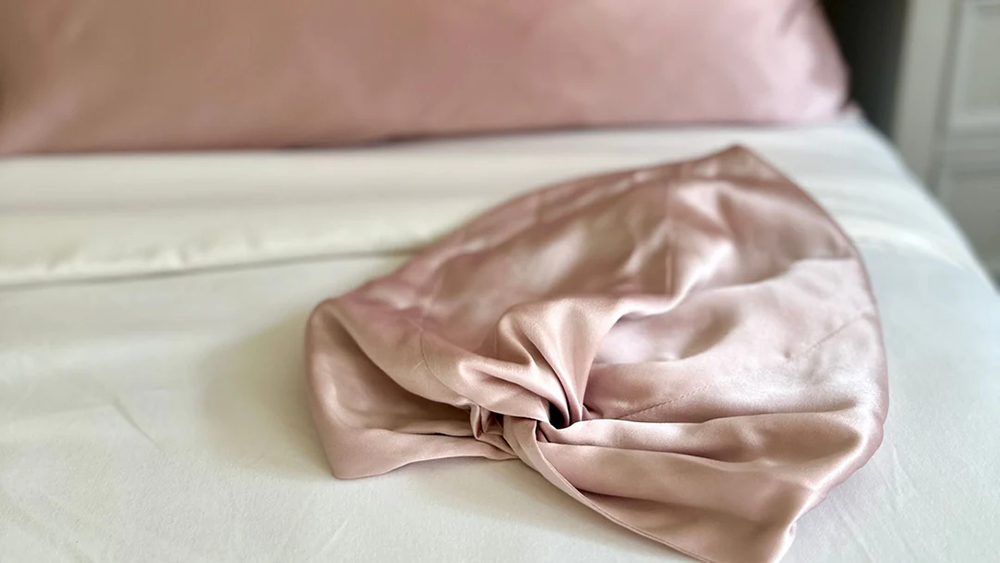One of the most opulent fabrics ever crafted, mulberry silk boasts a history as rich and captivating as the material itself. Woven through a series of meticulous, intricate processes that harmonize nature’s extraordinary gifts with human creativity and dedication, exploring the art of mulberry silk production offers profound insight into why this exquisite fabric has enchanted humanity for centuries.
We pride ourselves on being connoisseurs of this magnificent natural textile and warmly invite you to immerse yourself in our expertise. To do so, we shall journey through the illustrious heritage of mulberry silk, from the ancient legends surrounding the mulberry tree to the intricate transformation of delicate silk threads into the breathtaking mulberry silk bedding showcased in our luxurious collections. Whether you seek to deepen your understanding of the origins of your mulberry silk sheets or pillowcases, we welcome you to accompany us on this indulgent exploration.

What is mulberry silk?
Originating in China, mulberry silk stands among the finest silks in the world. Sourced from the fragile cocoons of the Bombyx mori moth—nourished exclusively on the leaves of the mulberry tree—this silk is spun from long, continuous fibers. When expertly woven, it reveals a fabric of pure white hue and sublime uniformity, surpassing alternatives such as wild silk and Tussar silk in both refinement and elegance.
At Megatex, every piece of our exquisite silk bedding, sleepwear, and accessories is meticulously crafted from this sumptuous material. Beyond the realms of interior design, wellness, and beauty, silk has found extraordinary applications unmatched by any other natural fiber. Remarkably, silk is stronger than steel by weight, and its elasticity and flexibility have made it indispensable in crafting parachutes, surgical sutures, and life-saving medical devices—demonstrating the boundless potential of this extraordinary fabric.
To learn more about the remarkable qualities of mulberry silk, we invite you to explore our curated collection of articles detailing the transformative benefits it offers for your hair, skin, and sleep.

How is mulberry silk made?
As briefly explored, mulberry silk is a naturally occurring marvel, spun by the larvae of the Bombyx mori moth—a domesticated lineage tracing back to the wild silk moth, Bombyx mandarina. Historically, this species has thrived across a vast expanse, from the ancient lands of India and China to the far reaches of Russia. The art of cultivating silk through these domesticated moths—known as sericulture—is an age-old Chinese tradition, steeped in over 5000 years of history.
Often referred to as Bombyx silk due to its origins from the Bombyx mori moth, this exquisite fabric is more commonly known as mulberry silk, a name inspired by the white mulberry tree (Morus alba), whose leaves serve as the sole nourishment for the silkworms. Once the larvae have consumed sufficient foliage, they begin the delicate process of spinning their cocoons. This crucial phase in silk production lasts only a few days, after which each cocoon is gently unraveled to reveal the precious silk fibers. These fibers are then meticulously cleaned and processed, ultimately transformed into the luxurious mulberry silk fabric used in our premium bedding collections.

What is a mulberry tree?
The mulberry tree, an essential cornerstone in the creation of our 100% mulberry silk fabric, flourishes in many regions across the globe. While it can be found throughout Europe, North America, and various parts of Asia, the white mulberry tree is native exclusively to China. As a plant, it is remarkably resilient, growing rapidly and reaching maturity within approximately eight to nine years. Yet, these botanical facts pale in comparison to the tree’s rich and almost mythical heritage.
For centuries, the white mulberry tree has been revered for its medicinal properties. The Chinese Pharmacopoeia recognizes its leaves, root bark, branches, and fruit as vital components in traditional remedies. Even the sap and wood ash have found use throughout history. Mulberry leaves are believed to aid in regulating blood sugar levels and are frequently used to brew a soothing and refreshing herbal infusion. Across various cultures, these leaves are also thought to support weight management, reduce cholesterol, enhance skin health, and promote improved digestion.
The legendary history of the mulberry tree
Throughout its storied past, the mulberry tree has acquired an almost mythical status, appearing symbolically in literature, religion, folklore, and beyond. Below, we explore some of the most fascinating historical references to the mulberry tree that we’ve encountered in our journey with silk.
The mulberry tree in myths and legends
Mulberry trees have woven themselves into the fabric of global mythology and tradition. In Japan, for instance, many sacred paper offerings placed at shrines are crafted from mulberry bark. Thousands of miles away, in ancient China, the sun was often depicted as a majestic three-legged sunbird perched proudly atop a mulberry tree.
The royal history of the mulberry tree
The British Royal Family shares a deep historical connection with the mulberry tree. A notable collection of these trees once graced the royal gardens at Buckingham Palace. Originally planted by King James I in 1608, the garden was inspired by the vision of cultivating silk in England. Whether the idea was his own or influenced by William Stallenge—who authored a treatise titled *Instructions for the planting and Increase of Mulberry Trees, Breeding of Silkworms and the Making of Silk*—remains a mystery.
During his reign, the King imported and planted thousands of mulberry trees across the land. Though the trees eventually bore fruit, efforts to produce silk ultimately failed. Nevertheless, Stallenge continued to nurture the garden even after the King’s death in 1625. Ever since, the mulberry garden has been lovingly replanted and preserved, standing as a testament to history’s enduring fascination with this extraordinary tree.
The mulberry tree in literature
Mulberry trees have long held a distinguished place in literary tradition, most famously featured in Shakespeare’s *A Midsummer Night’s Dream*. In this timeless tale of tragic love, the ill-fated lovers Pyramus and Thisbe are destined to meet beneath the shade of a mulberry tree. Upon discovering only a bloodstained scarf belonging to Thisbe, Pyramus—true to Shakespearean drama—plunges a dagger into his heart. As he falls, his lifeblood splatters across the tree’s pristine white berries, staining them a deep, eternal crimson. From that moment on, the fruit of the mulberry tree has borne the mark of their sorrowful tale, forever dark red.
Mulberry berries
Beyond their role in silk production, mulberry trees offer farmers another treasure—their delectable fruit. Known as mulberries, these berries bear a striking resemblance to blackberries and share a similarly enticing balance of tartness and sweetness. While best enjoyed raw when fully ripe—unripe berries may cause digestive discomfort—mulberries are also a versatile culinary ingredient, often featured in pies, tarts, and even delicately infused into herbal teas.
More than a delight to the palate, mulberries are also celebrated for their exceptional nutritional value. Rich in essential vitamins and minerals such as Vitamin C, Iron, Vitamin K1, Potassium, and Vitamin E, mulberries make a wholesome addition to any diet. Particularly when dried, they serve as a convenient, nutrient-dense snack perfect for life on the move. When it comes to beauty and skin health, the high Vitamin C content in mulberries plays a vital role in promoting collagen production, supporting the growth and repair of body tissues, and leaving the skin radiant and rejuvenated.

What does a mulberry tree look like?
Resilient and adaptable, the mulberry tree is as versatile in form as it is in function. Its appearance is shaped by its environment—when planted against walls, it flourishes even in confined spaces. However, on traditional mulberry farms, it is more commonly cultivated with a generous 5–10 meters of open space to allow for optimal growth.
Given the right conditions, a mature mulberry tree can reach towering heights of 30 to 50 feet, depending on the species. As it ages, the tree often develops a gracefully twisted and gnarled silhouette—an aesthetic quality that landscape architects and designers frequently embrace to create striking visual focal points in gardens and estates.

Discover luxury mulberry silk bedding, nightwear & accessories
At Megatex, our enduring passion for mulberry silk has shaped our journey. This extraordinary fabric, cherished across the globe for its unparalleled beauty and wellness benefits, continues to inspire us as we craft ever more exquisite designs.
If you’re ready to embrace the elegance of mulberry silk in your own life, explore our curated collections of luxurious silk bedding, pajamas, eye masks, and more, available exclusively online at Megatex. Every product we offer is meticulously crafted from 100% pure mulberry silk, bringing a touch of refined sophistication and timeless comfort into your home.
Share:
Latest Post
 The Weave of Dreams: Why a Silk Bedding Set is the Ultimate Investment in Your Sleep
The Weave of Dreams: Why a Silk Bedding Set is the Ultimate Investment in Your Sleep The Ultimate Guide to Buying Women’s Silk Pajamas in 2025
The Ultimate Guide to Buying Women’s Silk Pajamas in 2025 Breathable Silk Hair Bonnet – The Secret To Strong, Shiny Hair
Breathable Silk Hair Bonnet – The Secret To Strong, Shiny Hair The Ultimate Compendium of 100% Mulberry Silk: A Fusion of Ancient Suzhou Wisdom & Modern Sleep Science
The Ultimate Compendium of 100% Mulberry Silk: A Fusion of Ancient Suzhou Wisdom & Modern Sleep Science
Ask For A Quick Quote
If you are looking for more information on our services, or how we could potentially help, we would love to hear from you!




